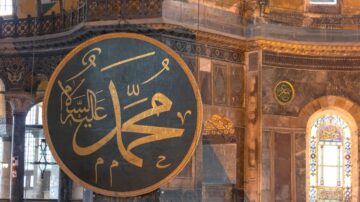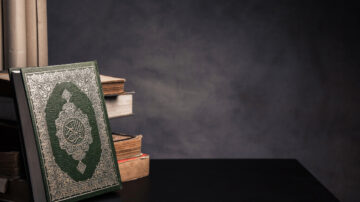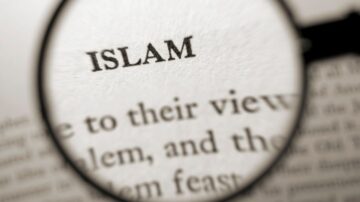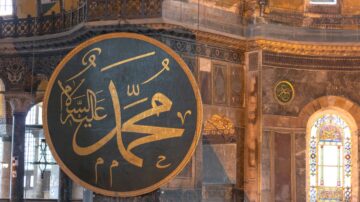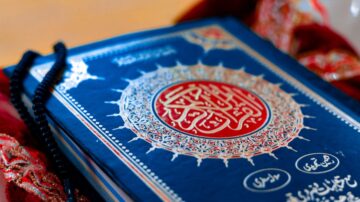The Arab tradition was subjected to research and findings by researchers who presented huge research works that revealed her hidden heritage. However, some aspects of her heritage such as the aspect of sport did not gain attention. This phenomenon partly goes back to the popular thought that it is the Greek that is well known with its in-depth sport tradition. It is the Greek that was first known with collective sport activities as it organized several Olympics in commemoration of its gods. Conversely, the Arabs were Bedouins who knew nothing about physical exercise as they were not associated with any specific sports. In the words below, I will critique this claim from two angles; first, the Arab’s connection to sport before and after Islam. Second, traditional resources on sport that unveil the sport activities the Arabs excelled in and the extent at which they show concern to it.
The Arab and the Sport: The Concept and the Features
The Arabs lived in the Arabian Island for centuries and they established countless civilizations before the advent of Islam that witnessed sport activities. The nomadic life had forced them to practice hunting, running and riding to repel fighters and engage in attacks. It is true that they gave no intended attention to sport as a profession but a number of sport activities were witnessed as this is evident in horse race where the riders will be competing and be bosting of their horses. In addition, they do observe, during the race, similarities between their horses. It is also recorded that certain competitions and sport activities were also carried out in the famous Arab market places such as ‘Ukazh and Mijannah.
With the advent of Islam, the concept or sport witnessed a tremendous change in terms of how and frequency. In fact, it changed from it been practiced for the sake of ensuring life necessities to something that is done in order to achieve goals related to belief or to ensure physical fitness as human being is formed by soul and the body. Hence, ignoring one of the two parts will be detrimental. This became a well-articulated theory, likewise certain ethics that must be observed while practicing sports. From another angle, the mingling of Muslims with people of other nations and civilizations also helped in discovering sports that were unknown to them before, such as gun shooting, football etc. From this, we derived that the sport during the eras of Islam has certain features which could be summarized in the following points:
- Its link with the Islamic creed: this is rooted in the fact that religious rights cannot be carried out except if a Muslim is physically fit and healthy and have the ability to carry out the same responsibility with the horse ridder. It could be said that to the Greek, the sport has faith or religious connotation as it is carried out to venerate gods, but to us, we do not believe in that, however, we believe that protection of body is one of the rights that should be fulfilled. The Prophet (may the peace and blessing be upon him) said: in deed, your Lord has right over you, and your body has right over you and your family has right over you, hence, give everyone his due right”
This is how its status rose from being an ordinary sport to a right of which negligence in its fulfilment will attract punishment. It is as a result of this that self-destruction or negligence towards the healthiness of the body falls under the rubric of punishable acts
- It is tied to knowledge: Muslims do not practice sport for leisure or fun, instead, they consider it as knowledge and they promote it. This is clear in the discussion of Haji Khalifah on the famous classifications of sciences at his time. In some classifications, the science of swimming is regarded a branch of engineering. He also talked about the science of shooting and he mentioned some literatures on it. He also mentioned the science of falconry with some of its literatures. Falconry (al-Bayzarah) is a science that is concerned about the conditions of limbs and the signs indicating its strength and weakness in hunting. The link between the sport and the knowledge could be the reason behind writing on sport although compiling all the literature written by the Muslims remains a difficult task.
- It is tied to ethics: it is undisputable that every action or practice is linked with certain ethical behaviours that govern its conduct. The conduct of sport is guided by a number of ethics that should be observed by those competing in sport activities. These ethical behaviours are found in literatures that discuss riding, hunting and throwing or shooting. This aspect is not found in other civilizations in a comprehensive manner.
A selected Classical Resources on Sport
Libraries have witnessed numerous classical resources that discuss types of sports, how they are carried out and certain shariah guiding rules and ethical regulations that must be observed while practicing sport. Below are the details of those literatures in the order of types of sports:
First: Equestrian Sport: this is the oldest and the most important of the Arab sports as it is tied to the defence of the nation and chasing enemies. It is of four types:
1. Horse riding
2. Hit-and-run
3. Bow throwing
4. Chasing with sward.
A person is not called a knight unless he had a mastery of all the four pillars of equestrians mentioned above. Some important literatures on this are: (Hilyatul Fursan wa Shi’arul Shuj’an) by Ibn Hudhayl al-Andalusy (363 A.H). it is a book authored on the horse, names of its limbs, it’s colour, what is liked in it, how it is selected, how to learn its riding and how it is used in competition. It also entails the mentioning of swards, spears, bows, arrows, shields and others that are linked with equestrian.
Among them is (Nihayatus Sul wal-Umniyah fi Ta’allum A’malil Farusiyyah) by: Muhammad bn ‘Isa bn Ismail al-Aqsra’i (749 A.H) who lived at the time of Mamluki. It is a very bulky literature of about 600 pages. The author mentions in it, the science of throwing, crossbow and some other sciences. He also mentions some ointment that a knight needs for his horse. Despite the fact that the author was not a religious scholar, he mentioned some verdicts and sharia issues that the knight and the horse need.
(Al-Farusiyyah al-Muhammadiyyah) by Ibn al-Qayyim (751A.H), it is a comprehensive literature in the aspect that it touched. It explains the shari’a injunction on the aspects of equestrian sport and the details of how it is practiced, likewise those things that a learner needs to know and the ethics that need to be observed while practicing the sport.
Among the literatures is (An-Nafahat al-Miskiyyah fi Sina’atil Farusiyyah) by Ahmad bn Muhammad al-Hamawi (1142). This is one of the later literatures in this aspect. It was written as a gift for one of the governors of Egypt during the era of Sultan Muhammad Rabi’u. it consists of an introduction and nineteen chapters.
It begins with the virtue of equestrian sport, throwing and the commencement of equestrian sport. With regards to the structure of the book, he mentions horses, its names, its illnesses, how it is controlled and the necessary skills for throwing while on the horse. He also touches on sharia issues like the permissibility of competing with horses, camel, and throwing with a crossbow.
Secondly, hunting: the numerous books authored on hunting indicate that hunting was given an utmost attention in the Islamic civilization. In the third century of Hijrah (precisely 296), the king Abdullah bn al-Mu’tazz wrote (al-Jawarih wal-Sayd). In the fourth century of Hijrah (358AH), Muhammad bn Husain who was popularly known as Bakshajam wrote his famous literature titled (al-Masayid wal matarid) which is regarded one of the most important literatures in that aspect. His literature begins with how to train horse on games catching. He also opened another chapter on the instruments needed in hunting as he mentioned four types of games namely; falcon, Peregrine Falcon, Hawk and eagle. He also opened a chapter on games and what is permissible and prohibited in them. He also did not forget to open a chapter on sea-games, and in between the book, textual and poetic evidences.
Among the literatures is (Ahkamus Sayd wat-Tard ‘Indal Arab) by Qasim bn ‘Ali az-Zainabi (563).
Also, Kitab (al-Bayzarah) by unknown authored, edited and published by Muhammad Karl Aliy in the middle of the century.
Intihazul Furaz fil Sayd wal Qans by Hamzah an-Nashiry from the people of the tenth century. It is a comprehensive book in this area. It is a book that was described by the author of Kashfuz Zunun in his statement: (it is an unprecedented book). The book consists of an introduction and eight chapters, the first three chapters of which touched on hunting in the Qur’an, the Hadith as well as those who hunted amongst the prophets, while the fourth chapter is on the names of animals that are used for hunting. The fifth is on the permissible and prohibited games. The sixth is on rulings of hunting, while the seventh and the eight chapters are basically on poetic and textual narrations on hunting.
Among the latest literatures during the era Uthmani is (Risalah fil Sayd bil Barudah) by Ali Afandi
Thirdly: Throwing: there are a lot of literatures on it some of which were written by the Muslim scholars. They include; al-Wadih fil Ramy wan-Nashab by Imam al-Tabari (310AH) as it was mentioned by the author of Kashful-Dhunun. Also, (Bayan al-Istidlal Ala Bayan Mujtalis-Sibaq wan-Nidal by Ibnul Qayyim (751AH), and (as-Samah fi Akhbarir-Ramah), and Garsul Ansab fir Ramy bin Nashab both are the work of Shuyuti (911AH). Also as-Sabq wan-Nidal by Abu Musa Sulaiman popularly known as al-Hamid (305 AH), and (Nihayah Fi ‘Ilmir-Rimayah) by Sharafuddeen Husain bn al-Yuniny (701AH) as mentioned by Haji Khalifah. And also (al-Bidayah wan-Nihayah fi ‘Ilmur-Rimayah) by some of the later scholars of the eight century, the book which was completed in the year (775 AH), also (Tuhfatut-Tullab fi ‘Ilmur-Rimayah wan-Nashab) by Sulaiman bn Khalil bn Sulaiman ar-Rami, and Al-Kifayah fi ‘Ilmur Rimayah by Muhammad bn ‘Ali al-Hanafi al-Hashimi al-‘Alawi. Also (al-Kifayah fi ‘Ilmur-Rimayah) by Asil al-Hanafi.
Fourthly, many other Sports: the heritage Library is rich in terms of books that discuss different types of sports such as: (al-Ibahah fi ‘Ilmis-Sibahah) by as-Sayuti (911AH)
And the book (Al-La’b bil Bunduq) by Abi Abdullah Muhammad bn Ismail al-Baghdadi (588AH) popularly known as Ibnul Baqqal. It is indeed comprehensive in that aspect as the author classified the work based on the classification of the books of Jurisprudence (Fiqh) on Alsinatir-Ramah as described by the author of Hidayatul Arifin. Also (al-Masara’ah Ilal Musara’ah) wherein the prophetic narrations on the permissibility of wrestling are cited. This however is specific to that which does not involve payment from the competing parties. And (Lu’abul Arab by Ahmad Taymur Basha (1348AH), the book that mentioned various Arab sports. It is authored based on the letters of the dictionary alphabets.
From all these, it is understood that Muslims did not neglect physical sports, instead, they practiced it and advanced in it when they regarded it a science and put it within the frame of ethics that governed it






